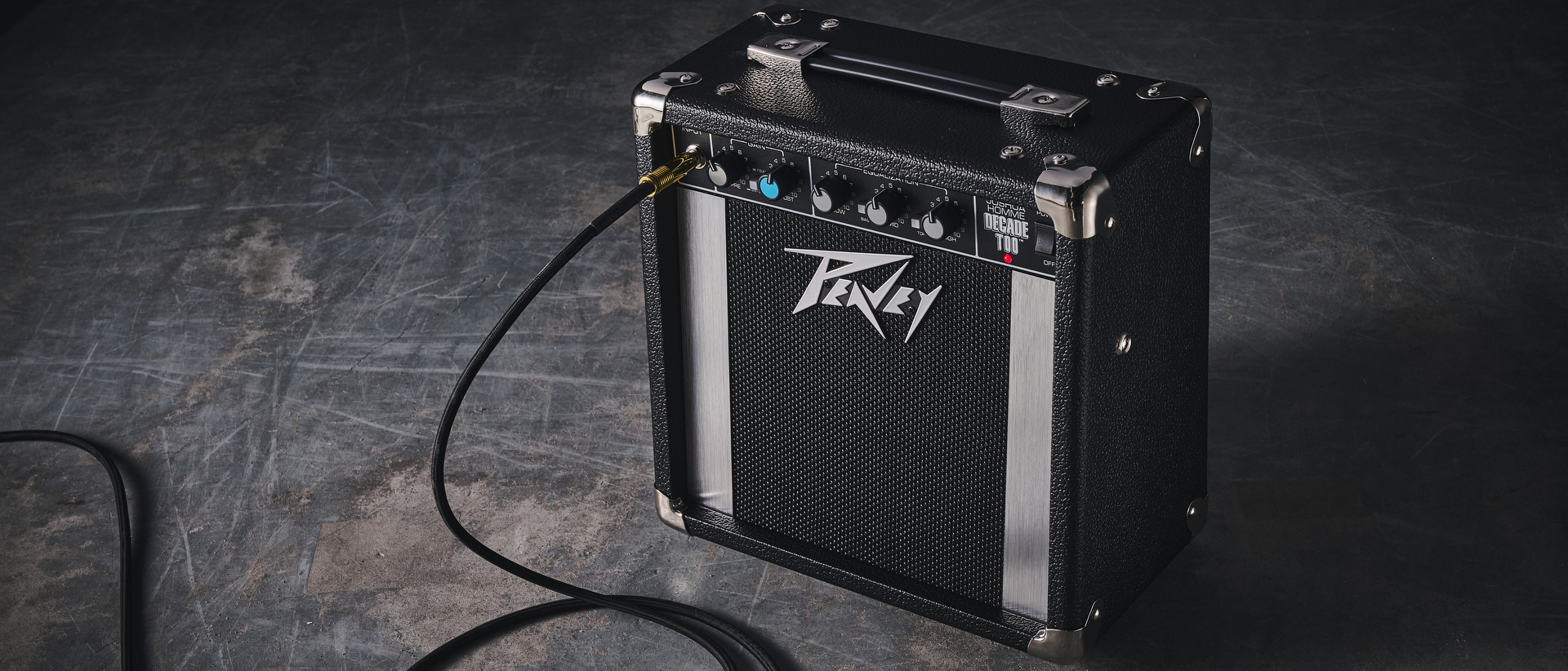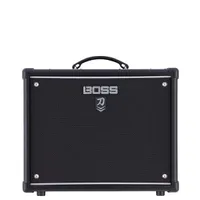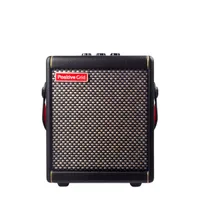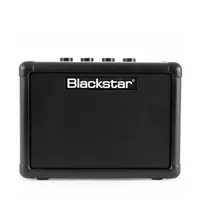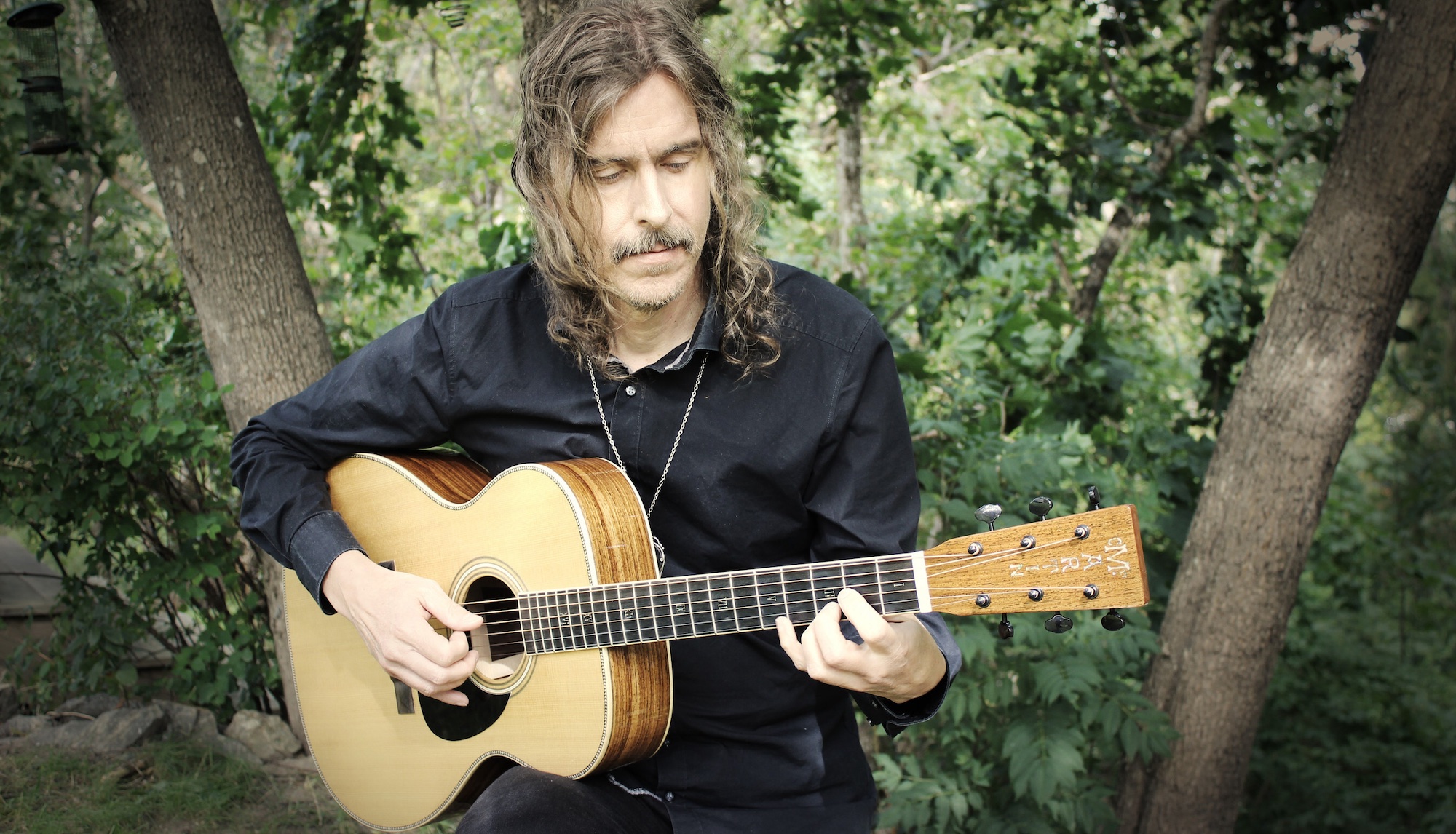Guitar World Verdict
What the Peavey Decade Too does is recreate the sound of an old style of practice amp, warts and all, but with some handy extra features for further tonal sculpting. If you're a Josh Homme fan or would like a quirky studio tool to add some cut to your mixes, the Peavey Decade Too is worth a look.
Pros
- +
Recreation of Josh Homme's "secret weapon".
- +
Extra tone-shaping options.
- +
Easy to use.
- +
Cuts in a mix with other guitars.
- +
Surprisingly loud.
Cons
- -
Recreates original Decade tone, warts and all.
- -
Not suitable as a normal practice amp compared to contemporary competition.
- -
Our test model had some slightly noisy switches.
You can trust Guitar World
What is it?
The Peavey Decade Too is an interesting thing to release in 2025. Harking back to the practice amps of the eighties that purveyed long past their initial release, it largely shuns 45 years of progression and stays faithful to what the original Decade practice amp was, albeit with a few additions.
The instigator behind this is the one and only Josh Homme, declaring the Peavey Decade as the “secret weapon” behind his recorded tone (see video below), leading to some internet hysteria and skyrocketing prices for the discontinued Peavey Decade. However, even with this in mind, is there a place for such an old-fashioned amp alongside some much more capable, feature-rich and affordable practice amps out there now?
Specs
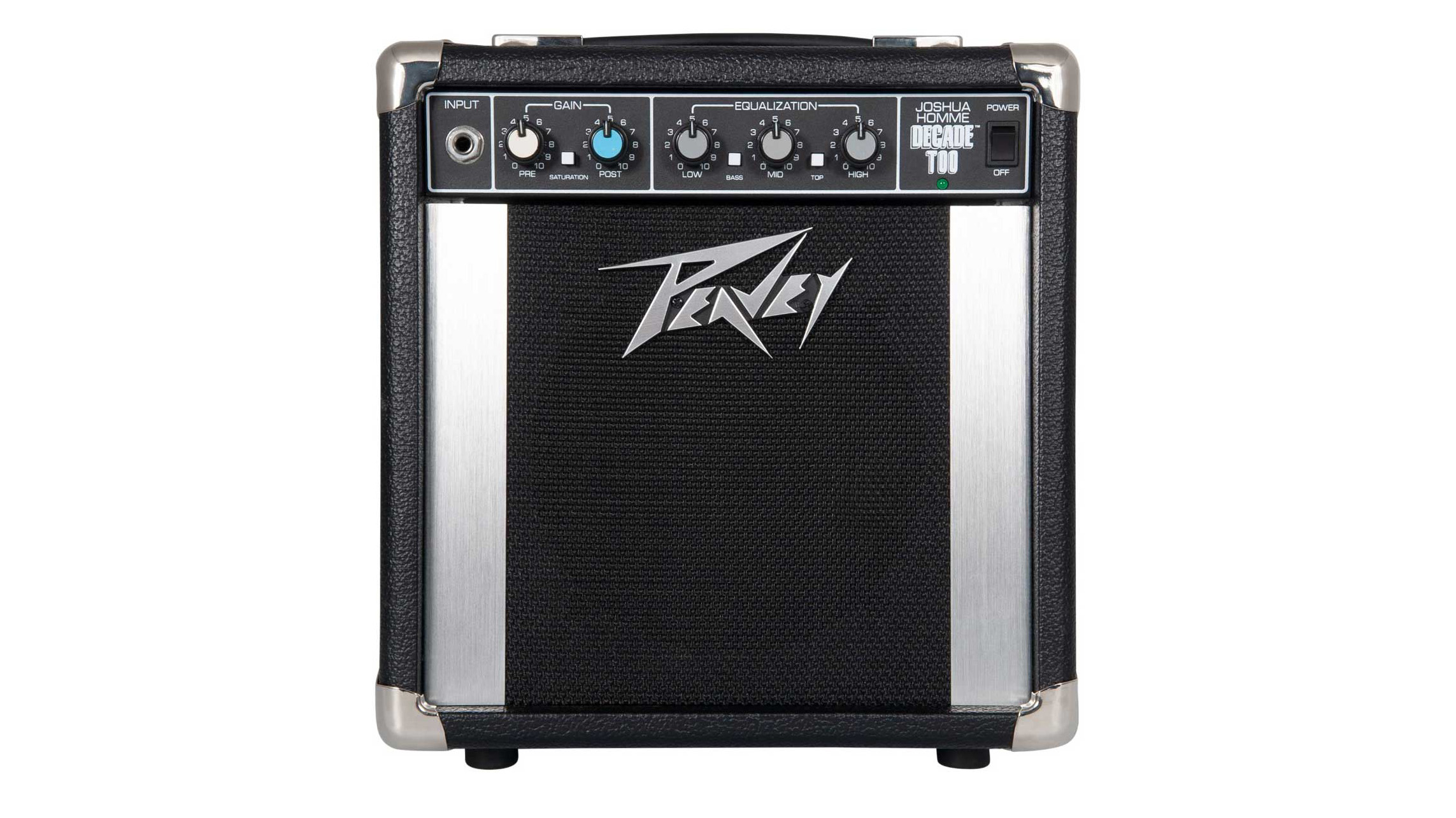
- Launch price: $399/£299/€329 (1 x 8" Extension Cabinet $199/£199/€229)
- Type: Combo practice amp with optional extension cab
- Origin: China
- Output: 10W
- Speaker: 8" combo and 8" extension cab
- Channels: Normal, Saturation
- Controls: 3-band eq, Top and Bass Boost, Pre and Post gain
- Connectivity: 1/4 inch input, effects loop, balanced 1/4 inch out, balanced XLR DI out
- Footswitch: Sold separately
- Weight: 5.4kg/12lb
- Dimensions: 15.7x26x16.1cm/6"x10"x6.3"
- Contact: Peavey
Build quality
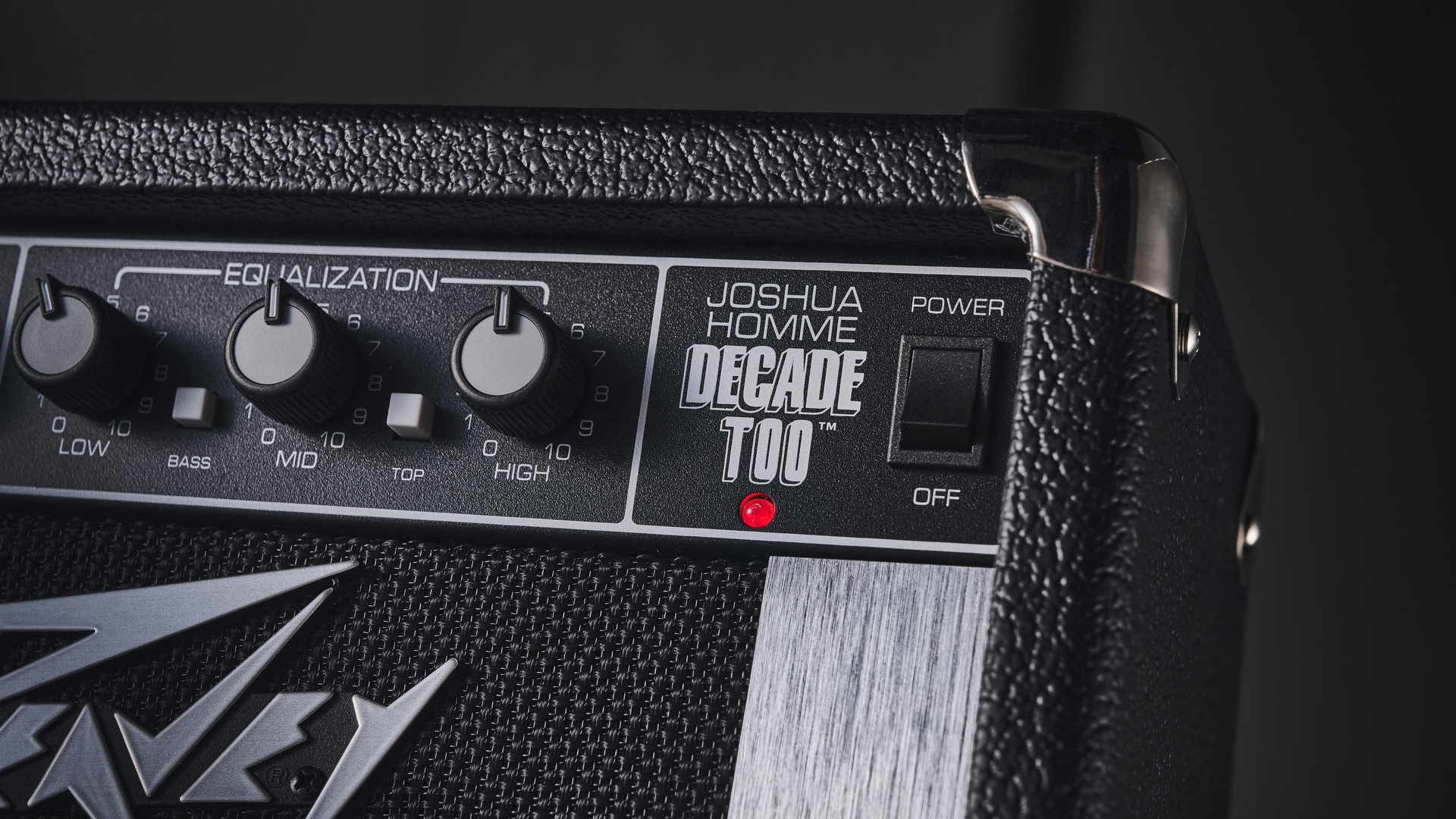
Build quality rating: ★★★★☆
We’ll have to keep that context in mind when it comes to the sounds, but the build is solid regardless. The Decade Too's open-backed, wooden construction feels sturdy, and with metal braces at the corners by way of reinforcement, this thing will surely be long-lived.
The simple array of controls all feel capable of taking some punishment, and the amp itself is reassuringly heavy at 12lbs, particularly considering the generally lightweight nature of solid-state amplifiers . When I say heavy, I mean it’s heavy for its diminutive size. It’s still a very portable piece of gear, with a small 8” speaker that you can chuck in the back of any car.
The only slight concern with this test model are the switches that produce an audible pop under operation. It's not too loud a pop, and often this issue can be resolved with some repeated presses to dissipate static, however, this did not seem to help here.
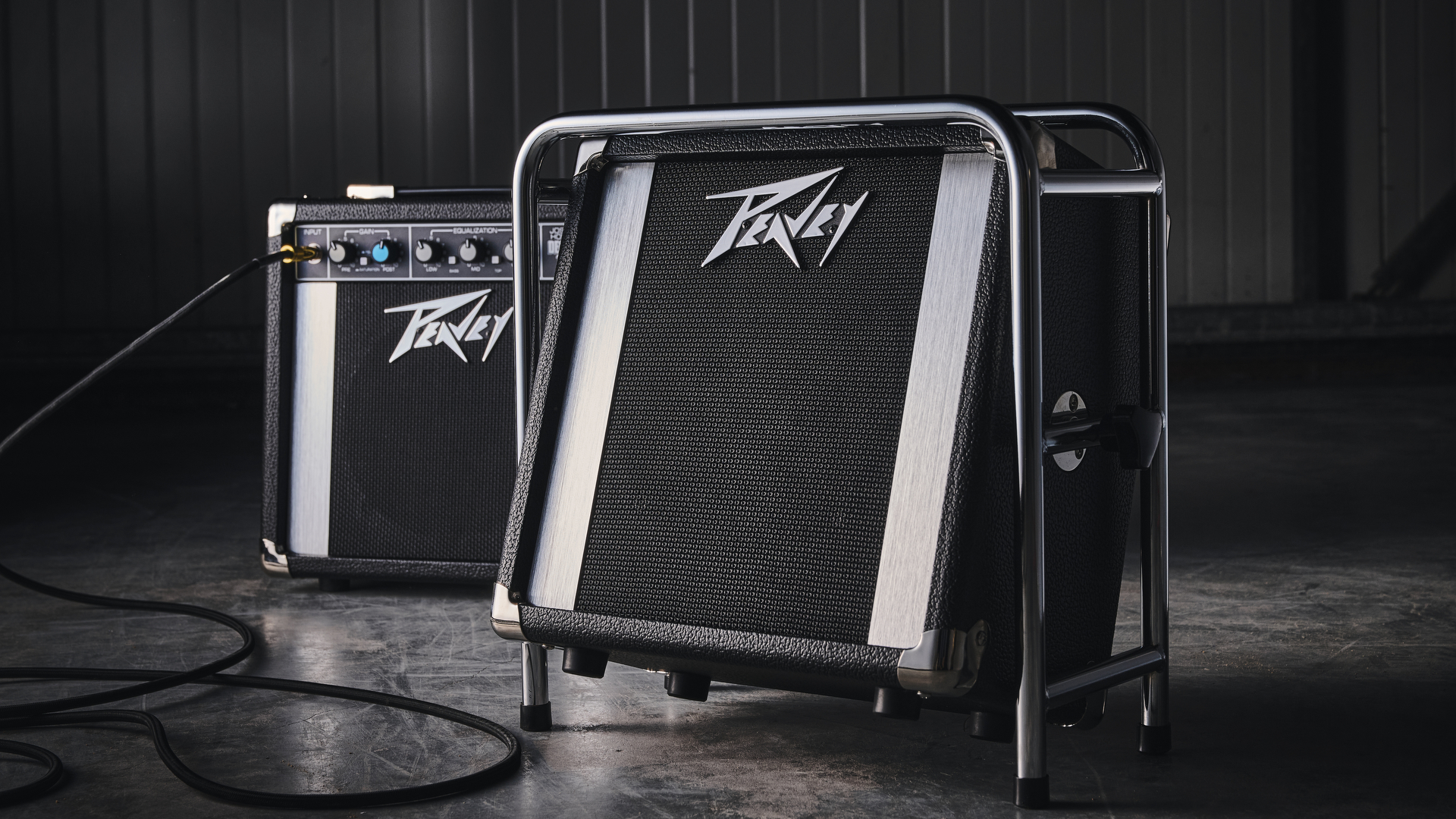
Moving on to the 1 x 8" extension cab, it’s much the same thing, minus the controls. The extra feature here is a frame that allows the cab to tilt. It’s quite an imposing, industrial-looking solution that some may find a little obnoxious, especially given how other cabs utilise a couple of low-profile legs to do the same job.
All the latest guitar news, interviews, lessons, reviews, deals and more, direct to your inbox!
Having said that, the mechanism does work well, and the benefit of the design is that we are afforded the luxury of tilting the cab in whichever way we like, unlimited by the length, shape, and play of the aforementioned legs. It also allows for the stacking of the combo on top of the extension cab, even while tilted. In another plus, it's also completely removable - a good option if that look does offend you.
Usability
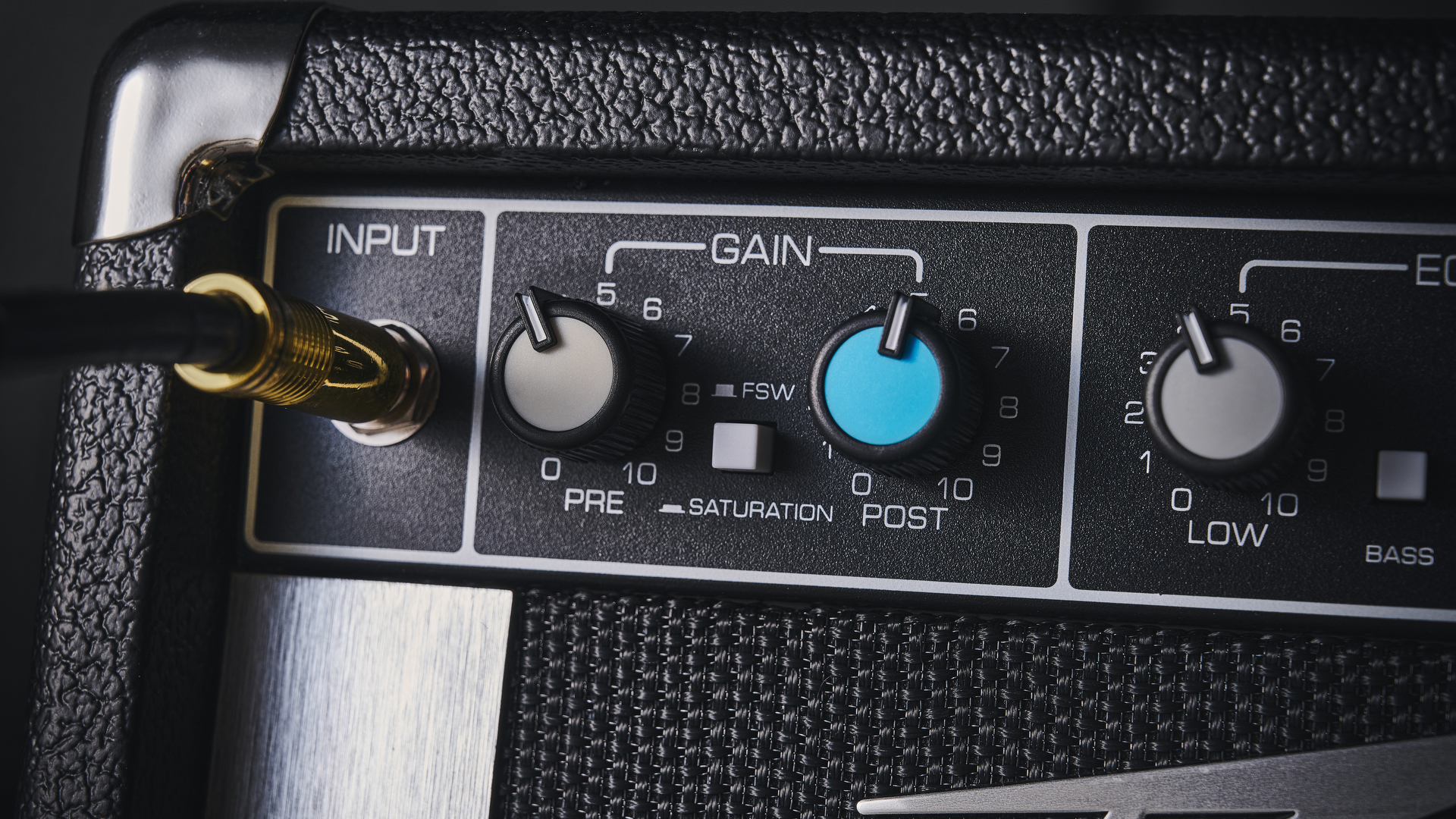
Usability rating: ★★★★★
Modern practice amps have come a long way and sport a large number of features, some easy to use, some not so much. Without those extra bells and whistles, practice amps of the '80s and '90s were simple beasts, and the Peavey Decade Too is no different.
Whilst that is a fair amount on the front panel, it is all well laid out and mostly self-explanatory
Guitar goes in, volume is controlled via a pre- and post-gain, there's a 3-band EQ to tweak the tone, and new for the Decade Too, Bass and Top switches to boost the bass and top end, plus a Saturation (overdrive) switch. Whilst that is a fair amount on the front panel, it is all well laid out and mostly self-explanatory.
Some may not be used to the pre/post gain setup, but that is easy enough to understand once you know how it works. And even if you don’t, a little messing around will quickly get you there.
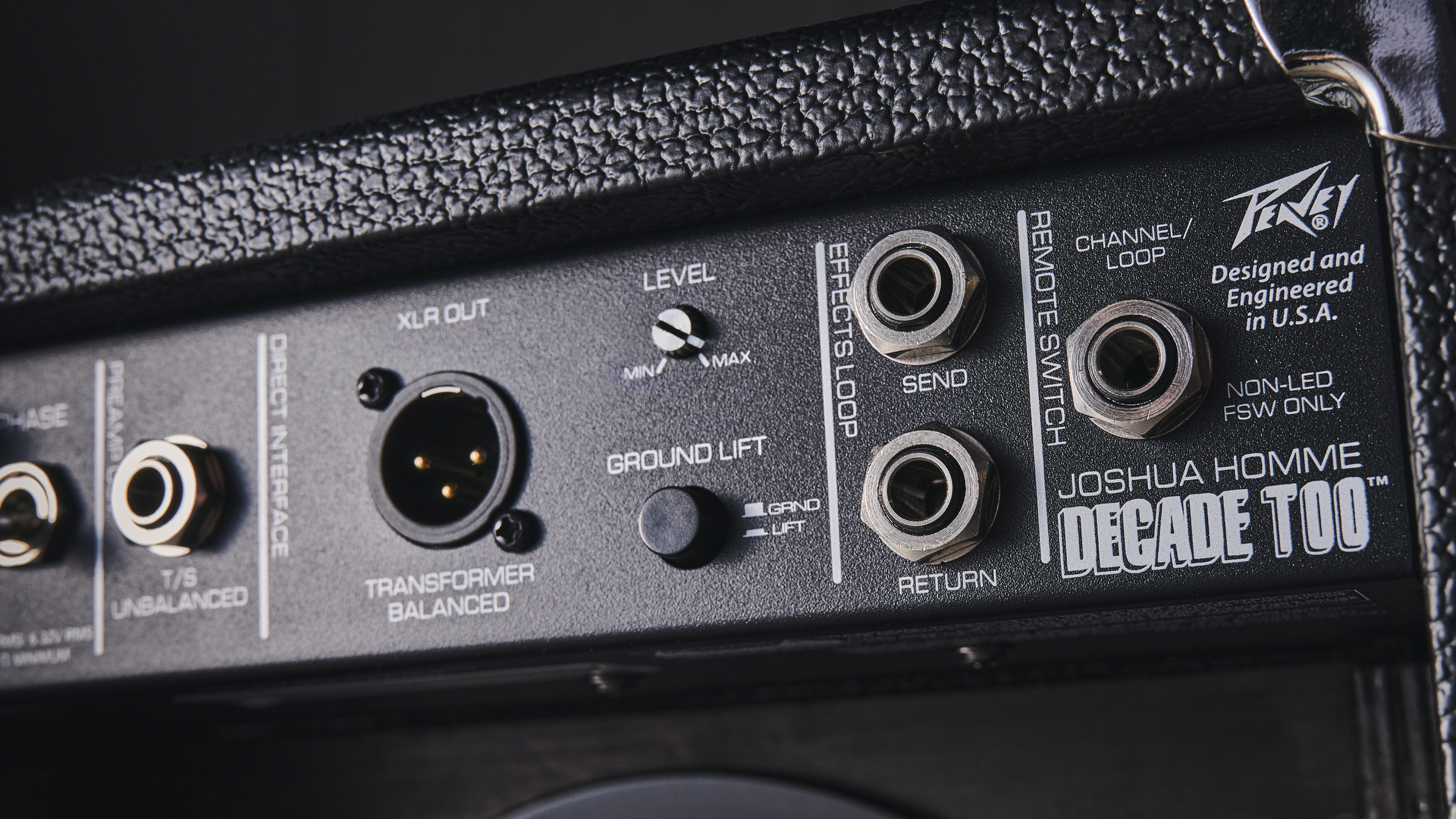
The original Peavey Decade had two inputs - a Normal for clean sounds and a Saturation for overdrive. This new version puts this on a switch on the front panel, and can also be controlled via a footswitch - an appreciated improvement.
Around the back of the unit, we have an output for the extension cab, an effects loop, pre-amp out, and a 1/4" unbalanced and XLR transformer balanced direct out, all clearly labeled. Also living here is a phase switch for keeping the extension cab and combo in phase.
Setting up that extension cab is also straightforward, as it’s literally plug and go. Which sums up the operation of the product as a whole - there are some extra features, but no menus or anything complicated, just good old-fashioned, well-labeled knobs and switches.
Sounds
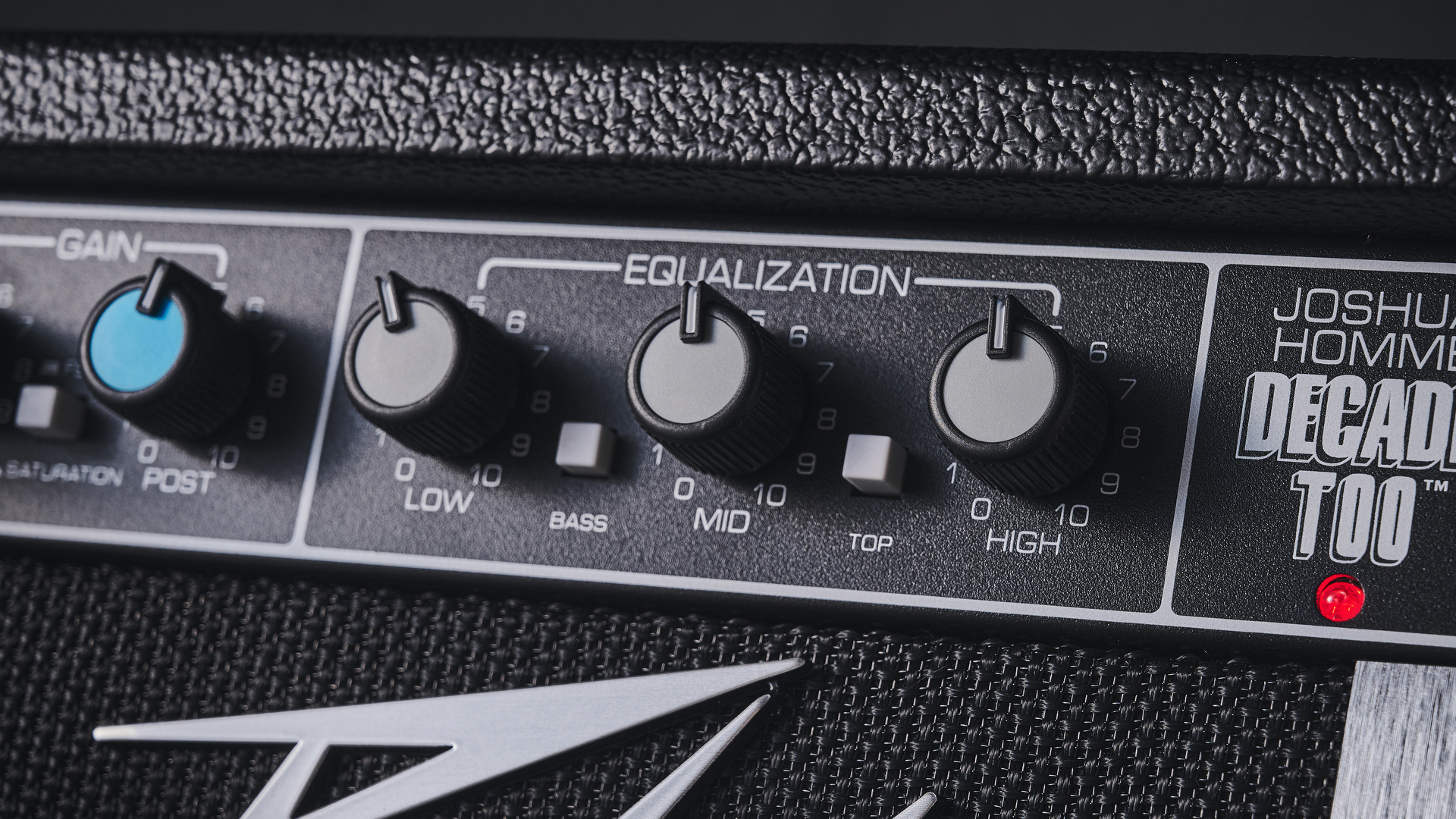
Sounds rating: ★★★★☆
Judged as a normal practice amp, the Peavey Decade Too sounds like most solid-state practice amps of the affordable ilk from the '80s and '90s, often typified by a thin and wiry tone that we have mostly moved on from in modern equivalents. The Decade, however, was a good example of one thanks to Peavey's proprietary TransTube technology, which has been carried on into the Decade Too.
Many contemporary practice amps now have all sorts of digital wizardry and speaker setups that allow them to get closer to the sounds of bigger and more expensive gear in a way that is impressively versatile. Not to mention the onboard effects, and many of these offerings from the likes of Boss, Blackstar, and Yamaha are just as affordable as the current iteration of the Decade; therefore, it can't compete in this context.
The Peavey, however, is not meant for this. Josh Homme liked it for that ‘wiry’ tone, and used it to cut through a mix along with other guitar amps, so the fact that the Decade Too, accurately recreates the lo-fi sound of practice amps from yesteryear is entirely the point.
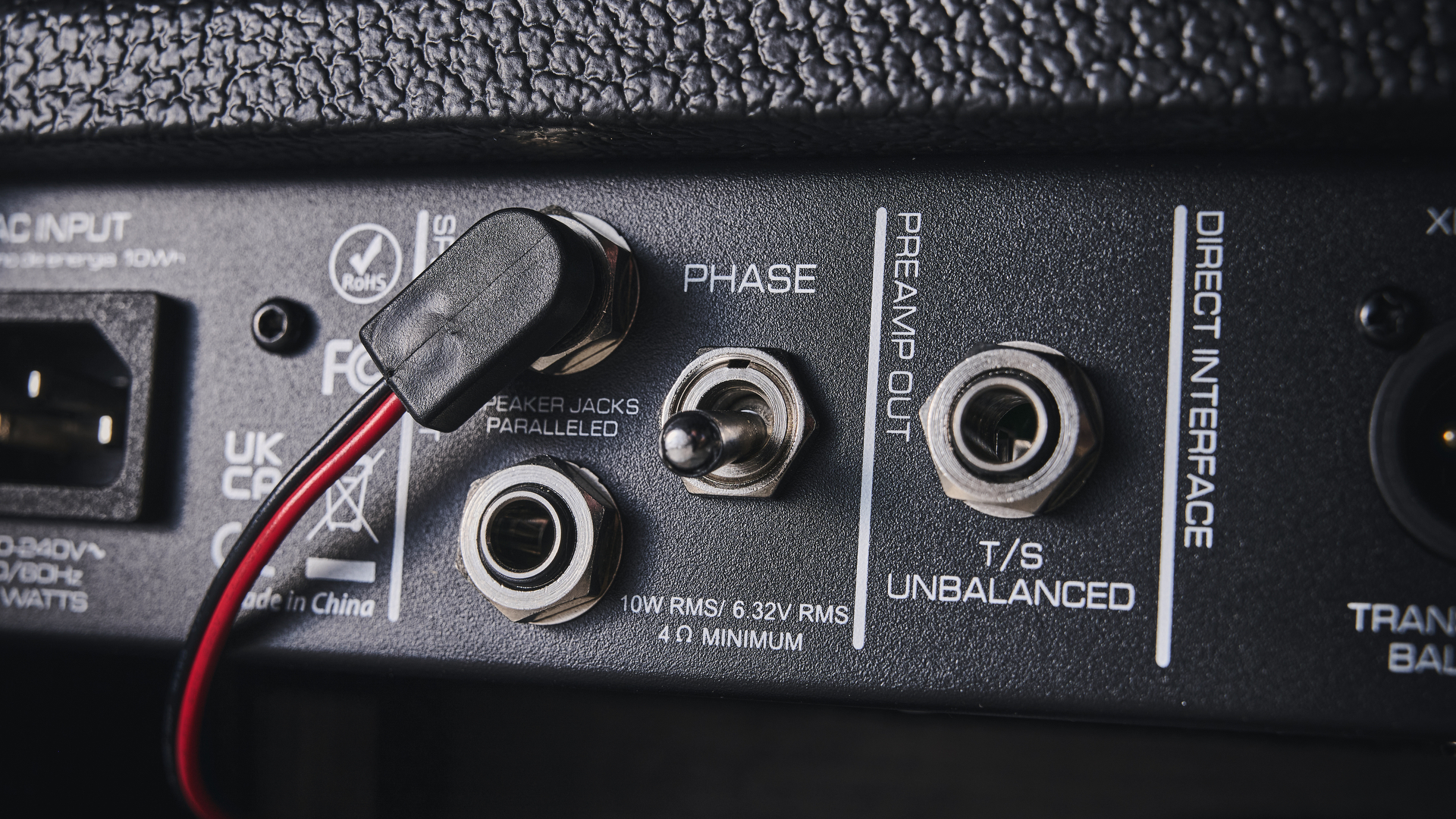
The clean sound is quite boxy in the low end, and the Bass switch did not help with this, as it muddied things up a bit. I found the best way to use the clean was to lean into the bright nature of a tiny solid-state amp, as the high end is surprisingly nice with the High control taming it a little. The Top switch renders the sound quite a painful one in the room, but in a way that could cut nicely in a studio mix.
Tune a guitar to C standard, punch in the Saturation switch, turn the preamp gain to full, and suddenly, it all starts to make a lot of sense
Contrary to this, the Bass switch is useful when the amp is working in its Saturation mode. The overdrive here is thin, so the bass boost helps round it out when used with a set of single-coil pickups, without losing too much of that cut. For even more of that piercing cut, bring in the top boost, and you'll have a sound that will sit forward in any mix, particularly effective with humbuckers.
Tune a guitar to C standard, punch in the Saturation switch, turn the preamp gain to full, and suddenly, it all starts to make a lot of sense. Doing this and blasting through some Queens Of The Stone Age riffs on my PRS S2 Custom 24 is endless fun, as every note punches through with clarity thanks to that wiry nature.

The TransTube-powered saturation sounds massive in a lo-fi way within this context, with the 3-band EQ proving fairly powerful. I found myself leaving them mostly in the middle and using the treble to cut out some fizz whilst leaving the top boost switch in to retain that clarity.
A surprising discovery is just how loud the thing is
All of this can be effectively replicated through the D.I output on the back of the amp. In Peavey's words, this is a "full range old-school transformer balanced design, that's great for DAWs and IRs". My experience recording our demo of the amplifier is in line with this. Using PreSonus Studio One and adding a cab from Helix Native, I got a purposefully cutting tone from the D.I so that it can be blended nicely with the darker sound we had set up on the microphone.
A surprising discovery is just how loud the thing is. More than enough to encourage complaints from the neighbours on its own, and with the cab plugged in, the Peavey Decade Too could easily keep up with a drummer in a rehearsal room.
It's not a sound that can compete in a modern context, but the Decade Too does what it sets out to do - recreate the original Peavey Decade, with some extra tone-shaping features. As a recording utility to help a part cut, a way to get you closer to the QOTSA sound, it's mission is accomplished.
Verdict

If you are looking for a practice amp, to, you know, practice on - don’t buy the Peavey Decade Too. There are better options for this use, that are, in some cases, more affordable to boot.
Still, even with this in mind, I couldn’t help but have fun with this little box and its surprisingly loud extension cab. Nostalgia is a powerful thing, and it took me back to my first Stagg amplifier and the old Peavey Decades I would go on to use in university guitar tutorial rooms.
All the things that make the sound of those amplifiers unpleasant in the room add up to make it cut in a mix, which seems to be why Josh Homme took to it as his secret weapon.
A quirky studio tool to get closer to an aspect of that massive Queens of the Stone Age sound
Because of Josh Hommes' reverence for the original Decade, those originals are currently getting listed between $300-$400 at the time of writing. At the end of the day, despite the dated technology, things are worth what people are willing to pay for them, which makes the Decade Too an interesting proposition if you are in the market for an effective tool to get closer to an aspect of that massive Queens of the Stone Age sound.
Guitar World Verdict: What the Peavey Decade Too does is recreate the sound of an old style of practice amp, warts and all, but with some handy extra features for further tonal sculpting. If you're a Josh Homme fan or would like a quirky studio tool to add some cut to your mixes, the Peavey Decade Too is worth a look.
Test | Results | Score |
|---|---|---|
Build quality | Feels like it will last for years, despite the slightly noisy switches on ours. | ★★★★⭐︎ |
Usability | Simple controls means easy to use. | ★★★★★ |
Sounds | Does what it sets out to do - recreate the sound of the original Decade with some useful extras. | ★★★★✩ |
Overall | A solid buy for those looking to recreate the QOTSA sound or add to their studio arsenal. | ★★★★✩ |
Also try
Boss Katana 50 Gen 3 $349/£259/€373
An example of what bang for your buck looks like nowadays, the Boss Katana will supply modern tones and effects in a giggable, 50W digital package
Read more: Boss Katana 50 review
Positive Grid Spark Mini $229/£229/€199
If the Peavey Decade Too was to be modernised, it might look a little something like this. Up to date technology with a useful app, and, like the Decade Too, a cab is available that you can plug it in to, in order to reach rehearsal volumes.
Read more: Positive Grid Spark Mini review
Blackstar Fly 3 $79/£64/€75
The ultimate in mini amplifiers, this diminutive monster can supply great tones at a crazily affordable price. Being as tiny as it is, you won't get a lot of volume here, but there's enough to satisfy any solo practice needs.
Read more: Blackstar Fly 3 review
Hands-on videos
Guitar World

Sweetwater
The Guitar Geek

You must confirm your public display name before commenting
Please logout and then login again, you will then be prompted to enter your display name.
